Costs, contracts and the narrative of prosperity: an economic analysis of smallholder tobacco farming livelihoods in Kenya
Background: The tobacco industry has used the alleged negative impacts on economic livelihoods for tobacco farmers as a narrative to oppose tobacco control measures in low/middle-income countries. However, rigorous empirical evidence to support or refute this claim remains scarce. Accordingly, we assess how much money households earn from selling tobacco, and the costs they incur to produce the crop, including labour inputs. We also evaluate farmers’ decision to operate under contract directly with tobacco manufacturers and tobacco leaf-buying companies or to operate as independent farmers.
Methods: A stratified random sampling method was used to implement a nationally representative household-level economic survey of 585 farmers across the three main tobacco growing regions in Kenya. The survey was augmented with focus group discussions in all three regions to refine and enrich the context of the findings.
Results: Both contract and independent farmers experience small profit margins per acre, with contract farmers operating at a loss. Even when family labour is excluded from the calculation, income levels remain low, particularly considering the typically large households. Generally, tobacco farmers enter into contracts with tobacco companies because they have a ‘guaranteed’ buyer for their tobacco leaf and receive the necessary agricultural inputs (fertiliser, seeds, herbicides and so on) without paying cash up-front.
Conclusions: Tobacco farming households enter into contract with tobacco companies to realise perceived economic benefits. The narrative that tobacco farming is a lucrative economic undertaking for smallholder farmers, however, is inaccurate in the context of Kenya.
Keywords: eonomics; low/middle income country; tobacco industry.
© Author(s) (or their employer(s)) 2019. No commercial re-use. See rights and permissions. Published by BMJ.
Https://pubmed. ncbi. nlm. nih. gov/29967193/
The Farm Prosperity Project
El inglés es el idioma de control de esta página. En la medida en que haya algún conflicto entre la traducción al inglés y la traducción, el inglés prevalece.
Al hacer clic en el enlace de traducción se activa un servicio de traducción gratuito para convertir la página al español. Al igual que con cualquier traducción por Internet, la conversión no es sensible al contexto y puede que no traduzca el texto en su significado original. NC State Extension no garantiza la exactitud del texto traducido. Por favor, tenga en cuenta que algunas aplicaciones y/o servicios pueden no funcionar como se espera cuando se traducen.
English is the controlling language of this page. To the extent there is any conflict between the English text and the translation, English controls.
Clicking on the translation link activates a free translation service to convert the page to Spanish. As with any Internet translation, the conversion is not context-sensitive and may not translate the text to its original meaning. NC State Extension does not guarantee the accuracy of the translated text. Please note that some applications and/or services may not function as expected when translated.
Estoy de Acuerdo / I agree
5/12/2022 – This project was completed a long time ago, but the information gathered and resources provided are still valuable. In addition, check out the NC Farmlink program that was associated with this project and is now a permanent NC Extension program.
The Farm Prosperity Project was built on the belief that more farmers would protect their land if their farms were profitable. Our approach was to provide farmers with tools to help them make decisions about their farms and futures and identify the new crops and farm protection tools best suited to their situations. This four year project, led by Jeanine Davis at N. C. State University, was a collaborative effort involving faculty and staff from Land of Sky Regional Council, American Farmland Trust, Carolina Mountain Land Conservancy, Southern Appalachian Highlands Conservancy, Warren Wilson College, and the Appalachian Sustainable Agriculture Project. It was focused on five counties in western North Carolina. The project was funded by a grant from the National Research Initiative of the Cooperative State Research, Education and Extension Service, USDA, Grant #2005-35618-15645. This webpage is the repository for the decision tools, survey results, and information developed through that project. We hope you find them useful.
Project participants were Jeanine Davis, North Carolina State University; Tom Elmore, Land of Sky Regional Council; Susan Kask and Laura Lengnick, Warren Wilson College; William Hamilton, Southern Appalachian Highlands Conservancy; John Bonham, Carolina Mountain Land Conservancy; Gerry Cohn, American Farmland Trust; and Charlie Jackson, Appalachian Sustainable Agriculture Project.
Https://newcropsorganics. ces. ncsu. edu/specialty-crops/the-farm-prosperity-project/
Scaling Agritech at the Last Mile: Converging Efforts for Farmers’ Prosperity

India, one of the largest producers of food in the world, is working on ambitious targets to transform the state of agriculture in order to feed its growing population – poised to cross 1.5 billion by 2030 – while keeping the well-being of farmers at the forefront, especially smallholder and women farmers. The Indian agritech sector is expected to lead this transformation through path-breaking innovations to make agriculture more inclusive, sustainable and efficient. Technological integration will also create more jobs, particularly for young people.
India, one of the largest producers of food in the world, is working on ambitious targets to transform the state of agriculture in order to feed its growing population – poised to cross 1.5 billion by 2030 – while keeping the well-being of farmers at the forefront, especially smallholder and women farmers. The Indian agritech sector is expected to lead this transformation through path-breaking innovations to make agriculture more inclusive, sustainable and efficient. Technological integration will also create more jobs, particularly for young people.
Looking at a $65 billion economic opportunity for India in digital agriculture, the World Economic Forum’s flagship AI4AI (AI for Agriculture Innovation) initiative was launched in 2020. After extensive consultations among a range of stakeholders, an insight report documented 30 priority use cases of emerging technologies in agriculture. The Government of Telangana became the first in India to adopt a public-private partnership framework in which the government would create an enabling ecosystem for the private sector to invest in innovating and scaling agritech solutions.
Through subsequent deliberations, use cases, value chains and geographies were prioritized, giving shape to Project Saagu Baagu (the term means “agricultural progress” in Telangana’s native language, Telugu). Supported by the Bill and Melinda Gates Foundation and implemented by global development organization Digital Green, the first phase of Saagu Baagu has directly touched 7,000 chilli farmers in Telangana. A consortium of four agritech players offering soil testing, quality testing, e-commerce and advisories implemented the project on the ground.
This insight report presents the successes of and learnings from the first phase, as Telangana prepares to launch the second phase with the aim of reaching 100,000 farmers across more crops and districts.
World Economic Forum reports may be republished in accordance with the Creative Commons Attribution-NonCommercial-NoDerivatives 4.0 International Public License, and in accordance with our Terms of Use.
Young African Leaders Initiative
Hundreds of YALI Network members joined a Facebook chat about how to make farming more productive and profitable in Africa with Madison Ayer. Ayer is the chairman and chief executive officer of Honey Care Africa, a successful honey production and distribution value chain. He is helping beekeepers create sustainable and productive enterprises in Kenya, South Sudan and Tanzania.

The Farm Shop gives growers reliable access to the supplies they need to produce a crop.
Ayer’s strategy for successful farming is that growers must make accurate calculations of production requirements and outputs they’ll deliver at harvest. Achieving precision in tracking those accounts will allow them to evolve from smallholder enterprises to successful commercial businesses.
“Without the right seeds, fertilizers, and other tools, smallholder farmers stand little chance of producing a sufficient harvest,” said Ayer. “However, with access to the right products and methods, smallholder farmers can become very successful. The farmers must view it as a real business, not just an uninspiring activity.”
The perception of farming as an unappealing way to make a living is apparently hurting the advancement of agriculture in Africa. While some network members questioned the meager livings and small rewards reaped by today’s African farmers, Ayer calls agriculture “an exciting and successful livelihood.” He’s working with African youth groups to convey that message.
“We present a modern customer experience, conduct trainings about modern methods, demonstrate new technologies, and teach about other aspects of agribusiness,” Ayer said. “This is successful because it presents farming as an exciting livelihood with potential to make a good income through modern business.”
Ayer discussed the future of agriculture with an engaged and informed audience. A YALI Network member identified with a livestock operation endorsed Ayer’s recommendations for African farmers to rush into the future.
“It is time we embraced innovative, formal and value-adding approaches/practices if we are to think of and realize significant progress in our naturally-endowed agro advantages and prowess as a continent,” wrote a YALI member associated on Facebook with ZamGoats Product Innovation.
But getting started in a productive enterprise takes money. Probably the most frequently asked question in the Facebook chat: “Where do I get the start-up capital?”
Ayer has heard that question a lot. Besides helping beekeepers get started, he also works with Farm Shop, a social enterprise devoted to helping farmers access commodities and supplies they need to increase productivity and expand their enterprises.
“You can first inquire about whether there are local government grant programs that could support your start-up,” Ayer responded to the finance question. “There may also be NGOs operating in your areas that would be interested to support the start-up of your venture. Many private foundations offer grants to small organizations and are becoming increasingly interested in agribusiness as a livelihood opportunity.”
Raising the money to get started is the obvious problem, but Ayer urged small farmers to pay attention to something they might overlook. Are you sure the customer wants what you’re producing?
“Do not assume you know what they want. You have to speak to many of them, and really listen,” Ayer advised. “Ask open-ended questions about what challenges they are facing, or concerns they have, or what they feel is missing in their lives.”
Find out what the customer wants, find a way you can deliver it, and you’ve made a loyal customer, Ayer advises.
Identifying the specific demands in every step of your production process is the best way to successfully ensure that you will be able to deliver the product your customer wants.
“Before launching any project or business, it’s important to research whether the raw materials for production are readily available, how the infrastructure of transportation, storage, and packaging is developed; and to fully understand the possible markets for the product.”
Packaging design may not be a farmer’s strongest skill, but that’s another important detail in the delivery process, Ayer said, if your product is going to stand out from the competition.
By paying attention to each of the these details, by imposing standards of accountability and traceability, Ayer says an agricultural producer will also be able to insure product quality is maintained. Certainty and quality at every step allows the farmer to offer a consumer his product with pride and assurance.
Https://yali. state. gov/growing-prosperity-in-african-agriculture/
Contract farming may pave way for prosperity, enhance farmers’ income
Under contract farming, certain norms should be followed to secure the interests of contractor as well as farmer. Their agreement should be registered online in a transparent manner and in very clear terms.
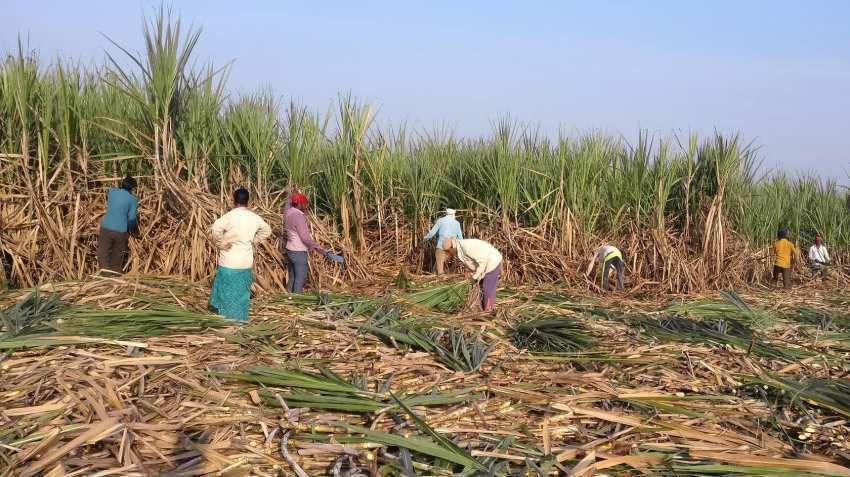
The contract farming, therefore, benefits both the farm-producers as well as the agro-processing firms. Image source: Reuters
Agriculture in India basically depends on seasonal factors, as it is, sometimes, marred by heavy precipitation or by drought, thereby hitting especially small and marginal farmers, who find themselves helpless before nature. Since such farmers are unable to make any experiment, they are drifting towards cities once they bear losses in agriculture. Although the Centre as well as state governments are striving hard to help farmers to rise above subsistence level, the steps being taken so far seem to be inadequate. Notably, the government is also trying to create awareness among farmers to adopt modern means to enhance their income, and of these, contract farming, is one of the new moves.
Under contract farming, agricultural production is carried out as per an agreement between farmers and a buyer, thereby, conditions for production and marketing of farm products are established. According to the agreement, farmers provide agreed quantity of their agricultural product at the time determined by the purchaser along with terms of quality standards. The buyer thus commits to purchase the product and, in some cases, also extends support to production through supply of farm inputs, land preparation along with technical advice.
The contract farming, therefore, benefits both the farm-producers as well as the agro-processing firms. According to Maharashtra Commission for Agriculture Cost and Prices (CACP) chief Pasha Patel, the contract farming is being witnessed on large scale in Gujarat, and good results have also come to fore in states of Maharashtra as well as southern states. This form of agriculture is not only benefiting farmers but also the facade of agriculture is also improving.
TRENDING NOW

Icra estimates GDP growth at 8.5% in first quarter; maintains FY24 forecast at 6%

Mobile Payments: Tips to make your online payments safer

Chandrayaan-3 Moon Landing LIVE Updates: ISRO says mission is on schedule; touchdown tomorrow

BHEL shares jump 10% on Rs 4,000 crore order win from Adani Power subsidiary

Jio Financial Services’ exclusion from stock indices postponed; check the revised date

Nifty to consolidate ahead of 2024 Lok Sabha election; check investment strategies, sectors to bet on, analysts’ top picks

Zaggle garners Rs 25 crore from ValueQuest in pre-IPO round

150% dividend: Shares of Hindustan Aeronautics to trade ex-date soon – Check details

Rupee Vs Dollar: Rupee rises 19 paise to close at 82.94 against US dollar

Pyramid Technoplast IPO last date, listing date, price range, subscription status, other details
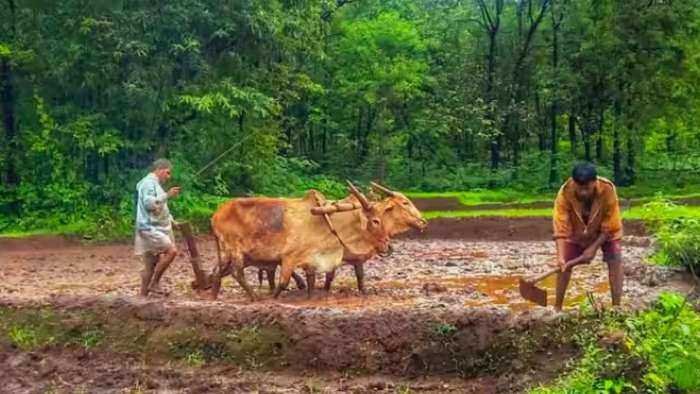
PM-Kisan Transfer Scheme: Eligibility criteria, last date and money a farmer gets under this programme
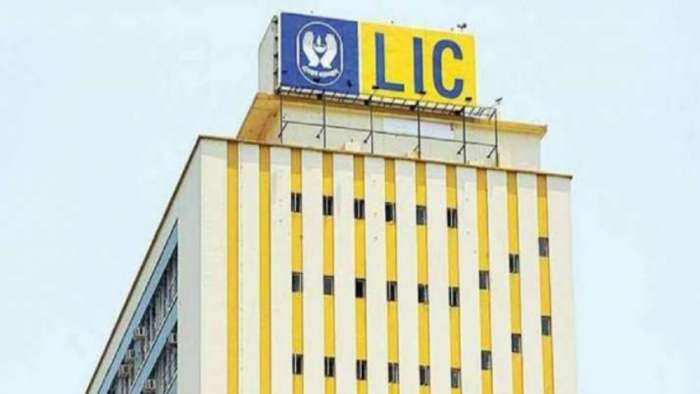
LIC owns 6.66% in Jio Financial Services through demerger action
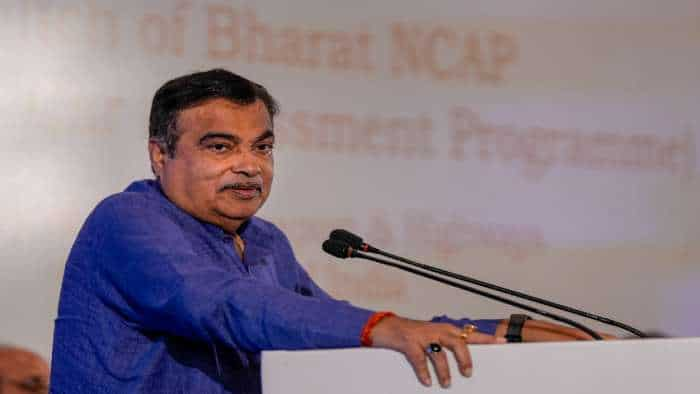
With an aim to improve road safety standards, Gadkari launches Bharat NCAP

Honda to hike City, Amaze prices from September

Vodafone Idea plans to clear about Rs 2,400 crore dues by September
The advantages of contract farming
-It makes small scale farming competitive
-This is also helping lowering transaction costs
-Farmers will get assured market for their produce at their doorsteps
-This will also reduce marketing and transaction costs
-It also reduces risk of production, price and marketing costs
-Small farmers can access technology, credit, marketing channels and information
-It will also open up new markets which would otherwise be unavailable to small farmers
-It also ensures higher production of better quality product
-It will also ensure consistent supply of agri produce with quality
-It will make direct private investment in agri activities
Under contract farming, certain norms should be followed to secure the interests of contractor as well as farmer. Their agreement should be registered online in a transparent manner and in very clear terms.
However, there are certain challenges under contract farming arrangements including; it may lead to monopolistic practice; farmers may exploited with low prices for their produce; difficult for common farmer to understand it; and small farmers will be least beneficiary. Further, this is also flayed for being biased in favour of firms or large farmers, while exploiting poor bargaining power of small farmers.
In May 2018, Union Agriculture Minister Radha Mohan Singh unveiled the Model Contract Act 2018, to bring contract farming activity, besides laying special emphasis on protecting the interests of farmers, considering them as weaker of the two parties entering into a contract.
Accordingly, one of the key features of the Model Act is that it brings contract farming outside the ambit of the APMC Act. It also provides for a “Registering and Agreement Recording Committee” or an “Officer” at the district/block/taluka level for online registration of sponsor and recording of agreement. It also stated that the contracted produce will be covered under crop/livestock insurance in operation.
The Act provides for promotion of Farmer Producer Organization (FPOs)/Farmer Producer Companies (FPCs) to mobilise small and marginal farmers. Further, the FPO/FPC can also be a contracting party if so authorized by the farmers, and the contracting party will be obliged to buy the entire pre-agreed quantity of agricultural produce as per contract.
The Act also envisages setting up of Contract Farming Facilitation Group (CFFG) for promoting contract farming and services at village/panchayat level.
Big Tobacco woos African farmers with bogus promises of prosperity
Ronald Labonte receives funding from the Canada Research Chairs Secretariat, the Canadian Institutes of Health Research and the National Institutes of Health.
Donald Makoka and his co-authors receive funding for this research from: the US National Institutes of Health, grants R01-DA035158 (National Institute of Drug Abuse, National Cancer Institute (NCI) and the Fogarty International Center) and R01-TW010898 (Office of The Director and NCI); and the American Cancer Society.
Jeffrey Drope and co-authors receive funding for this research from: the US National Institutes of Health, grants R01-DA035158 (National Institute of Drug Abuse, National Cancer Institute (NCI) and the Fogarty International Center) and R01-TW010898 (Office of The Director and NCI); and the American Cancer Society. He is also Vice President of Economic and Health Policy Research at the American Cancer Society.
Raphael Lencucha receives funding from Fonds de recherche Sante Quebec, the Canadian Institutes of Health Research and the National Institutes of Health.
Partners
University of Ottawa provides funding as a founding partner of The Conversation CA-FR.
McGill University and University of Ottawa provide funding as members of The Conversation CA.
McGill University provides funding as a member of The Conversation CA-FR.
Lilongwe University of Agriculture and Natural Resources provides support as an endorsing partner of The Conversation AFRICA.
“We have more than 20,000 … small-scale farmers growing tobacco … the industry is critical in reducing poverty levels.”
Or so says an official with the Zambian Development Agency who we interviewed for our study on the political economy of trade, tobacco control and tobacco farming.
He was not alone in this opinion, a common refrain we heard in all three of our study countries (Kenya, Zambia and Malawi). It is one that dominates the trade, development and finance ministries of many low-income, tobacco-growing countries.
With tobacco use down in most high-income countries, Africa is one of the new battle sites of Big Tobacco’s efforts to grow its consumer base, partly by fighting every government attempt to comply with the WHO’s Framework Convention on Tobacco Control (FCTC).
While still making spurious claims that such control measures violate trade agreements, one of the tobacco industry’s other key lobbying arguments is that tobacco growing is essential to the livelihoods of millions of small-scale rural farmers.
We set out to answer that question in our three sub-Saharan African countries, chosen for their varying reliance on tobacco as an agricultural crop and source of export revenues (Kenya the least, Malawi the most, Zambia in the middle).
Our detailed survey of more than 1,800 small-scale tobacco farmers focused on the overall well-being of their households, but one issue particularly intrigued us: Did growing tobacco really provide them the livelihood Big Tobacco and their governments claimed?
Paid in cash
Our study found that one of the reasons farmers grow tobacco is that they are paid in cash by tobacco leaf companies at the end of the season. Not all crops offer this sort of a guarantee.
“Contract” farmers are given an additional incentive. They work under contract to leaf-buying companies that supply them with everything they need at the start of the season — seeds, fertilizer, pesticides and so on — and guarantee a purchase (but not the actual price) at the end of the season.
Independent farmers, on the other hand, must buy their supplies using borrowed or saved money, and take their chances that there’s a buyer at season’s end.
There are only a few leaf-buying companies that control the purchasing market. It’s no surprise, then, that both types of farmers complained about the lower-than-reasonable price they are eventually paid for their crop, while contract farmers have the inflated costs of their pre-season supplies deducted from their take-home cash.
It’s one thing to ask tobacco farmers how much they earn in a year (what they sell their crop for minus what they pay for their seed, pesticides, fertilizers, etc.), and quite another to estimate the unpaid family labour that goes into tobacco growing.
Family members unpaid
Tobacco is one of the most labour-intensive crops grown in sub-Saharan Africa.
Any reasonable estimate of how dependent farmers are on tobacco for their family livelihoods should account for the family’s unpaid efforts, which we did by carefully calculating the total hours of (adult) family labour spent growing tobacco.
We monetized this time using the lowest wage these family members might otherwise have earned by, for example, working to help other rural farmers grow or harvest their crops. We called the first estimate (crop sold, pre-season supplies deducted) farmers’ “perceived profit per acre” and the second, deducting the value of the unpaid family labour (converted from local currency to U. S. dollars for ease of comparison), their “profit per acre adjusted for household labour.”
Across our three countries the differences were dramatic. See below:
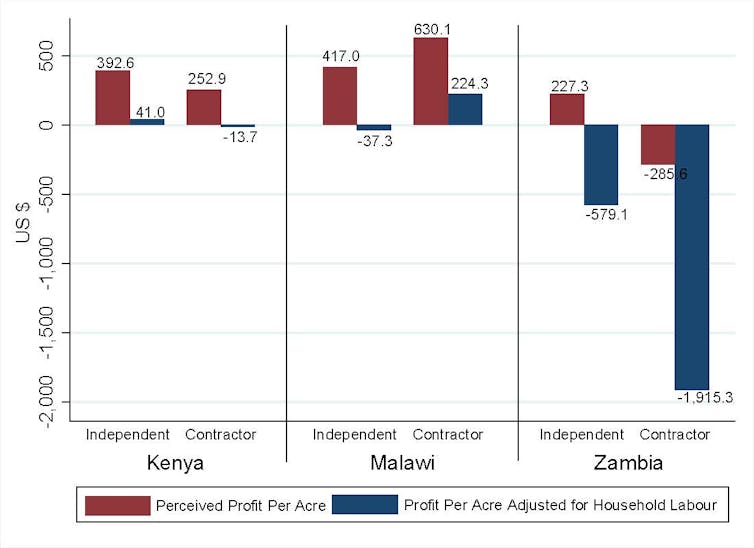
The differences between perceived and adjusted profits were striking, and especially for contract farmers.
In Kenya, contract farmers lost money once their family labour was calculated.
Zambian farmers fared even worse, with both groups losing substantially when adding in all the unpaid hours of their family members. Contract farmers were actually reporting losses even before estimating their family’s free labour.
Malawian farmers did a little better, with contract farmers still posting a net gain even when accounting for their family workers.

In later focus groups, these farmers explained that there was a lot of pressure on them to work only under contracts, with the slightly better returns for contract farmers being used as incentives.
Even so, their profits were far below the average rural income in the country, and were worse than those for other cash crops (such as soya and paprika) for which there was comparative data.
Who’s really profiting?
It can be argued that monetizing unpaid family labour in a context of high unemployment and endogenous and extreme poverty is chimerical.
But then so, too, are the huge profits and wealth that big global tobacco companies derive from the unpaid, or simply just ill-paid, efforts of tobacco farmers.
In 2011, the year we started our study, British American Tobacco (BAT) and Imperial Tobacco posted profit margins of 34 and 39 per cent respectively. In 2015, the salary and bonuses for the BAT CEO topped US$10 million; for the Imperial CEO it still came in at US$5 million.
Just whose livelihood is tobacco farming supporting? Feel free to draw your own conclusion.
What is Rural Prosperity?

Author Nigel Quinlan reads one of his tales at a storytellling evening in the skybowl, Cloughjordan, rural Ireland. Photo (c) Eoin Campbell.
As part of our rural sociology RETHINK Modernisation series, we present an article on prosperity. What does it mean in the rural context? Is it about income, or is there more to it than that?
By María Rivera and Karlheinz Knickel
“Money is not the main thing; the main thing is to do your work well … You cannot get rich with farming, but you can sustain your family” (Farmer, Latvia) (Šūmane et al., 2015).
For many decades, prosperity was most commonly understood as economic wealth. A higher monetary income, a continuously increasing business, and more money on the savings account tended to be equated with “doing well”. What we wanted to know, is whether this still holds true, and, more specifically, what prosperity and well-being means in an agricultural and rural context – and for rural people in very different parts of Europe. Our assumption was that the meaning of prosperity is more complex, and that it encompasses a much more complex and diverse reality.
Our interest was driven by the observation that, so far, agricultural policy, and the entire formal agricultural knowledge and innovation system, tended to be directed towards an ideal of highly commercial, modern, capital-intensive full-time farms. Other types of farms and strategies were treated as obstacles to productive agriculture and prosperity in the agricultural sector. The simple assumption was that commercial, modern, capital-intensive farms are more prosperous, and that the prosperity of these few farms diffuses and also makes rural communities more prosperous.
Official statistics and analyses provided by leading research institutes show that both is not necessarily the case. In reality, we can find regions where a large number of modern, capital-intensive farms are in deep economic trouble putting enormous pressure on farm families. We can also see that the profitability of a few farms does not really increase rural community well-being; one reason is that capital-intensive modern farms have little to do any more with rural businesses in the local economy. And, on top of it all, we can see that the concentration of production on some farms and in some regions, is directly linked with the marginalisation of other farms and regions.
So, what then is agricultural and rural prosperity all about? And how do farm families and rural people perceive the related developments? To start with, we wanted to know what their aspirations are, and what prosperity means to them. For this, stakeholders from seven different case studies across Europe – Germany, Spain, Lithuania, Latvia, Italy, Denmark and Israel – have been asked the same question: “what does prosperity mean to you?”.
We found that the meaning of prosperity and well-being varies and changes with context and cultures, but that there are some common ideas about rural prosperity that seem to apply in different regions:
First, prosperity is not just about money and wealth. Other aspects such as health and family well-being, a minimum level of autonomy and social recognition, all play rather significant roles for farm families. Farmer’s work and the related personal satisfaction play a very important role in their happiness. Environmental care matters for many farmers because it is them who first suffer the consequences of environmental degradation.
Second, a prosperous rural community is characterised by having an intact cultural, economic, political and social life, where people have entrepreneurial opportunities and good access to services such as health and education. The existence of a strong sense of community among the people living in a rural area, and knowledge exchange among farmers, increases their confidence in being able to cope with change, adapt and innovate.
To achieve rural prosperity, businesses should incorporate social values such as integrity, respect for people and solidarity, that allow discovering new ways of working in harmony (work-family), and oriented to achieve a healthy way of living.
For prosperity, we need to be allowed to innovate our own way, promoting “crazy” ideas and getting into lots of different niches (participant quotes)
All in all, it is important to pay more attention to social and environmental well-being in both policy and the formal agricultural knowledge and information system. Appreciating the strengths of traditional practices, and recognising farmers’ and other rural actors’ desire to maintain autonomy, contribute to social well-being, and are therefore part of what defines prosperity for them. Strategic frameworks and policies need to become more accommodating for the real and diverse realities, and the needs and aspirations of rural people. Small farms in particular require strategies build on their intricate knowledge of local resources, and, based on this, their particular farming practices.
See the opening article in the RETHINK Modernisation series, and the dedicated page for this series. See the Journal of Rural Studies special edition here.
Karlheinz Knickel is an independent researcher, analyst and consultant with 25+ years experience working with decision-makers at national and international levels. Supporting the synergies between environmental, economic and social goals in business strategies and policy development has always been fundamental in his work. Karlheinz Knickel’s institutional affiliations are in Portugal, Norway and Germany.
Related Articles
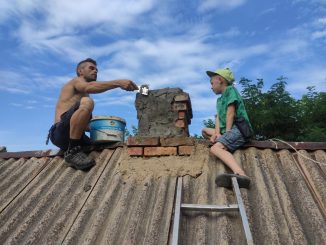
Ukraine | Green Road of Ecovillages, Six Months into War
The Green Road of Ecovillages is a network of ecological communities and permaculture centers that give shelter to refugees from Ukraine. Some of the displaced people are still in Ukraine, others are outside Ukraine. The Green Road has developed organically on the ground and with with international, mutual aid support, in particular from Denmark and the Netherlands. After our initial article, here we check in on new challenges and how they are being dealt with. By Anastasiya Volkova of GEN Ukraine. […]

Germany | Farm and Food Policy by Traffic Lights
A new German government coalition of Socialists, Liberals and Greens – known as the “traffic light coalition” – has put a new farming and food policy on its agenda. ARC2020 President Hannes Lorenzen provides insight into the agreement reached between the coalition parties. […]

Bureaucracy hampering CAP funds absorption in Romania
Simplification should work for peasant farmers and not to generate fund-grabbing by the corporate sector, as Maria Rodriguez Beperet explains. […]
Rural Resilience
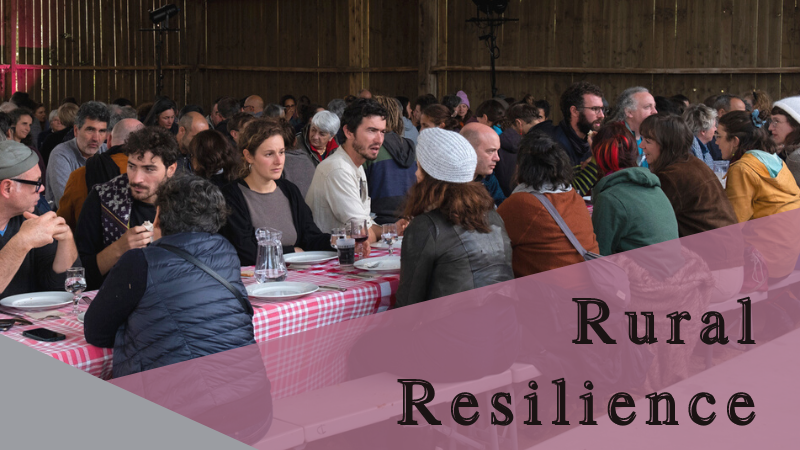
Co-constructing proposals rooted in actions on the ground: Visit the project page.
Carbon Farming: Stakes, issues and alternatives

Mathieu Willard of ARC2020 performed a study on future carbon farming regulation. Download the report.
Seeds4All

The Seeds4All project wants to amplify voices and connect people involved in agroecological seed production at all levels. Find out more.
This Month’s Articles

Missed an article of ours? Or would like to read it again? Find all our articles from this month here. Or browse through our chronological archive that stores all articles here.
CAP Strategic Plans: Reforming the CAP in Wartime

ARC launches a report summarising the key aspects of the CAP Strategic Plans approval process that started a year ago. Take a look here.
Rural Perspectives on Digital Agriculture

Connecting farmers, advisors, policies, nature conservationists, and critical thoughts around the trajectories of digitalisation. Get involved!
ARC2020 Newsletter
War in Ukraine

While the situation is still a changing one, the war in Ukraine is already destabilising food security in Europe. Find all articles here.
Tweets by @ARC2020eu
Contributors wanted
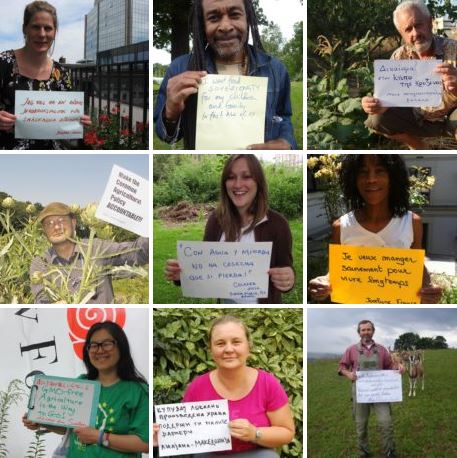
Interested in European food, farming and rural policy matters? Do you have great writing skills and an ability to deliver content accurately and on time? Then you could be just what we’re looking for! Find out more here.
Https://www. arc2020.eu/rural-prosperity/
Farmer Profitability And Prosperity: An Elusive Quest?
The recent “C-price crisis” is just one challenge during what has been a tough few years for smallholders in Central America.
Francisco[1] migrated to Guatemala City several years ago. He worked the night shift, behind the till, at a gas station. It was boring work, far from the bucolic setting of his youth, but he was able to save some money—savings he hoped would lead to a better future for his wife and child back home.
After about a year, gangs started extorting the gas station, and Francisco by extension, for so-called protection. Francisco returned home with his savings, making a bet on coffee.
Francisco and his family live in the Coffeelands of Eastern Guatemala. It is a beautiful region of the country, where farmers grow coffee in the higher reaches of the Sierra de las Minas mountain range, and corn and beans lower down in the valleys and hills, and along the river Motagua. Although one of the newer growing regions of Guatemala, an origin the National Coffee Association (ANACAFÉ) calls Nuevo Oriente, areas such as Olopa produce highly sought-after coffee.
Francisco is a star farmer. His return from Guatemala City coincided with the 2012-13 outbreak of coffee leaf rust. However, Francisco was motivated. He joined a CRS project and began to focus on boosting the productivity of the coffee plot he inherited from his family. He launched a farm renovation effort, led the farmer field school which involved hosting the group´s coffee nursery, and facilitated his community´s savings and internal lending community (SILC). His wife also participated in the SILC. She took out loans to start a small store, based out of the family´s home. The family started producing honey in an effort to diversity its income. But coffee was supposed to be the anchor, the centerpiece in the family´s livelihood plan.

Photo Credit: Philip Laubner
Recurrent drought, which decreases both coffee and staple crop yields, can contribute to the decision to migrate.
But the cost and accompanying debt necessary for farm renovation, coupled with record-low coffee prices, just as some of those renovated plants were starting to produce, were big blows for Francisco. To make things worse, recurrent drought drastically reduced the yields of corn and beans the family was able to grow on the small plot they rent. Last year, Francisco took the hard decision to migrate with his eldest son (11) to Texas, leaving his wife and two younger children behind. They are currently working two jobs. Francisco hopes to save up enough money to send his younger children to school and then university so that they can avoid the just-getting by struggle Francisco has faced as a coffee farmer. Univision recently covered part of this story on migration in Guatemala.
While Francisco’s move is deeply disappointing for our team—given how much hope there was even just a few years ago—his decision is no longer surprising. If you have been following my colleague Paul Hicks´series on the C-price and the coffee market you understand Latin American coffee farmers (large and small) are facing big challenges to the viability of their business model. Market fluctuations and volatility often lead farmers to take hard life decisions they would rather avoid. The recent “C-price crisis” is just one challenge during what has been a tough few years for smallholders in Central America (read more on recurrent drought and coffee leaf rust).
From my perch as a program manager in Guatemala and Mexico, I will outline in subsequent posts why Francisco´s decision was not surprising, highlighting data we’re analyzing relating to farm profitability. I’ll frame the recurrent challenges of climate change, debt/prices, and the lack of opportunities in rural areas and present some promising solutions or alternative models that bright farmers and entrepreneurs, young and old, are testing as part of their elusive quest for profitability and prosperity. I’ll end the series with some questions which will hopefully lead to the industry, NGOs, and coffee lovers asking ourselves what should we do? What can we do better? And have we gotten to the point where Francisco´s decision really is unsurprising and…dare I say inevitable for the majority of small (and many big) coffee farmers? What are the implications for the coffee sector as a whole, when a smallholder who is bright, energetic, and committed to the trade like Francisco can´t make it work?
[1] We are using different names for Francisco and his family in this story.
Https://www. blueharvest. org/post/farmer-profitability-and-prosperity-an-elusive-quest
USDA Supports Uncle Jerry’s Farm on its Path to Prosperity

Uncle Jerry’s Farm, LLC.’s humble beginnings stretch back to 2015, when a health-conscious consumer, Debora Coleman, decided to devote a small patch of her land on the outskirts of Jackson, Mississippi, to the growing shiitake mushrooms. She shared the yield with friends and family members. Consequently, each year the demand for such grew. This spurred her interest in efficient production and scientific approaches to small-scale farming.
In February 2015, Coleman attended the Mississippi Women for Agriculture two-day annual conference hosted by Alcorn State University (ASU), an 1890 land-grant institution with a mission to strengthen agricultural research and instill scientific practices. USDA staff was in attendance. After participating in conference workshops, Debora continued to network with ASU and USDA staff members. The month after, she was certified in a Farm Service Agency (FSA) borrower training program.
Debora believes in an “each-one, teach-one” approach to adopting and broad dispersion of innovative solution-finding. The following August, she held her first shiitake mushroom education program, using a practical, hands-on approach.
Over the years, Debora’s farming has evolved from hobby to surplus production and teaching the young and old the rudiments of farming. “[Farming] is not only a value-added activity because of the healthy products it produces, but the activity itself promotes solace and serenity,” Debora noted as an unexpected bonus derived from agricultural pursuits.
In 2018, Debora made farming a full-time pursuit. After using her personal savings to purchase a 5-acre for farming in rural Hinds County, she made application for a farm number with the local FSA office. Once her property was identified as a farm by USDA, she accessed the Natural Resources Conservation Services’ (NRCS) Environmental Quality Incentives Program (EQIP) and was awarded, after the second year of funding, a water-well, high-use pad, fencing and irrigation through EQIP. In 2020, she was awarded a Rural Development Value Added Producers Grant for shiitake mushroom which she used for marketing, promotion and working capital. To protect her crops, Debora recently applied for a High Tunnel System and is awaiting approval.
Debora said, “farming as an entrepreneurial enterprise and there are many financial needs for a new agriculture business.” Understanding that resources beyond USDA are needed, she receives guidance and services from the U. S. Small Business Administration and its Small Business Development Center.
The spring she participated in the Southern States “Path to Prosperity” event in Mississippi. After learning the importance of having separate business and personal checking accounts, Coleman opened a small business checking account with Bank Plus. She now understands that banks that serve all businesses, regardless of size, is critical to local growth and prosperity. Her positive experience has led her to encourage others to attend the “Path to Prosperity” series when it comes to their area.
Debora said, “the Path to Prosperity has made me understand that I am operating an agriculture enterprise and not just farm.”
Https://www. usda. gov/media/blog/2023/06/08/usda-supports-uncle-jerrys-farm-its-path-prosperity
‘Shree Anna’ Millets to Bring Prosperity to Farmers and People

We now are realising the importance of millet in fulfilling nutritional requirements and in fighting many diseases. The government of India has taken a big step in acknowledging the significance of millet for nutritional and food security as well as for boosting rural incomes. It has branded millets as ‘shree anna’—giving it the stature of mother of all grains.
The Sanskrit term ‘shree’ symbolises resplendence, wealth and prosperity. Millets have the potential to ensure stable incomes for poor farmers, especially, in the wake of extreme weather conditions. Millets need less water and labour. They are climate-resilient and thrive in dry regions and conditions of low soil fertility and moisture. In the wake of many countries witnessing erratic rainfall patterns, high temperatures, and prolonged droughts, translating into farm loss and lower and inferior quality cereal crop output, millets appear to be the sustainable solution to the severity of the climate crisis.
Millets have all the rich nutrients that may be lacking in the other foods we eat these days. Millets can bring prosperity to farmers as well as people. Ragi, Bajra, Porso Millets, Kodo, Jowar, Foxtail Millets, Little Millets, and Browntop are top millet varieties that are rich sources of macronutrients and micronutrients. They also have higher amounts of iron, zinc, calcium, potassium, protein and essential amino acids. And they are beneficial in checking high blood sugar levels in persons with Type 2 Diabetes and maintaining blood pressure and cholesterol levels and thus reducing the possibility of cardiovascular diseases.
Millets are grown in over 93 countries, mostly poor and lower-income countries. Over, 97 per cent of production and consumption occurs in the semiarid tropics of Asia and Africa. And India is the biggest producer of millet—26.6 per cent of the total global and 83 per cent of Asia’s output. A few decades ago, millet was widely consumed in different parts of India. However, the post-green revolution, with changing socio-economic demographics, influenced a change in eating habits and led to a sharp decline in per capita consumption of millet. It plummeted from 32.9 kg in 1962 to 4.2 kg in 2010. Another reason was the diminishing lucrativeness of undertaking the production of millets against wheat and rice.
How to Improve Millet Yield?
Millets are not only nutritionally rich but they also proved to be “Smart food” as they are easy to cultivate,…
The government of India is taking several efforts to urge farmers to produce millet and to promote its consumption in urban areas. In order to popularise millets, they were rebranded as nutri-cereals and the year 2018 was declared the National Year of Millets. On India’s proposal, the United Nations announced the year 2023 to be the “International Year of Millets”. And these efforts seem to be bearing fruits now. In 2022-23, we are likely to see a millets production of 20.5 million tonnes – a significant increase from 14.52 million tonnes in 2015-16.
American businessman and philanthropist Bill Gates has been a big part of the global efforts to end malnutrition. During the ‘Empowerment Through Nourishment’ campaign in India, he was called upon to temper the ‘shree anna khichdi’, in the presence of the union minister. This development shows the global attention millets are going to get in the coming years. This also underlines the government of India’s commitment to promoting “superfood” millet across the globe. As the importance of millets reaches more and more people, there will be an increase in demand in the international market. This will put Indian farmers at advantage. The year of the Millets also coincides with India’s presidentship of G20 and provides an opportunity to showcase the potential of millets to the visiting delegates.
The government is trying to mainstream millets for better nutritional outcomes as they have been added to PM POSHAN Scheme. Millet’s exports are increasing constantly, and the upward trend remained unaffected even during the Covid pandemic. A rise in domestic consumption and international demand would urge Indian farmers to go for expansion in millets cultivation. There seem to be good days for millets ahead thanks to the strong focus by the government. It has declared the Indian Institute of Millet Research as a centre for excellence and prepared a comprehensive strategy to boost exports.
There is a huge scope for export since India sells just one per cent of its total millet production in the international market. While the outlook for millets exports looks quite optimistic, the plans to promote value-added products of millets are going to add to the overall exports of nutri-cereals significantly. The popularisation of millets is going to increase the incomes of small-land-holding farmers in India. And its consumption would help people fulfil their nutritional requirements. In a true sense, millets are going to be ‘shree anna’.
Https://krishijagran. com/featured/shree-anna-millets-to-bring-prosperity-to-farmers-and-people/
